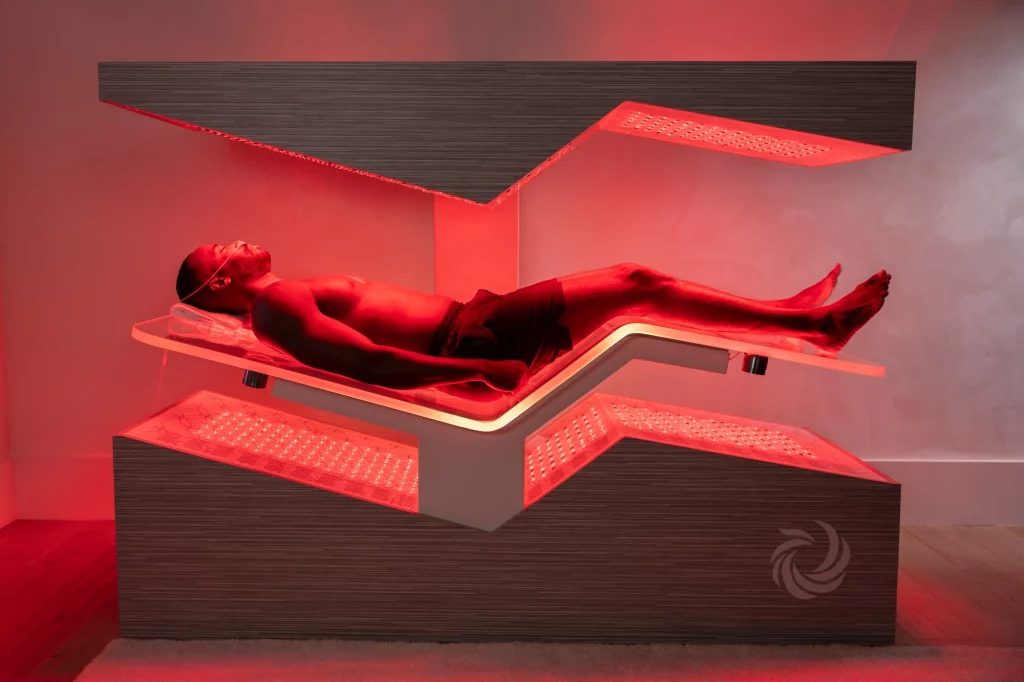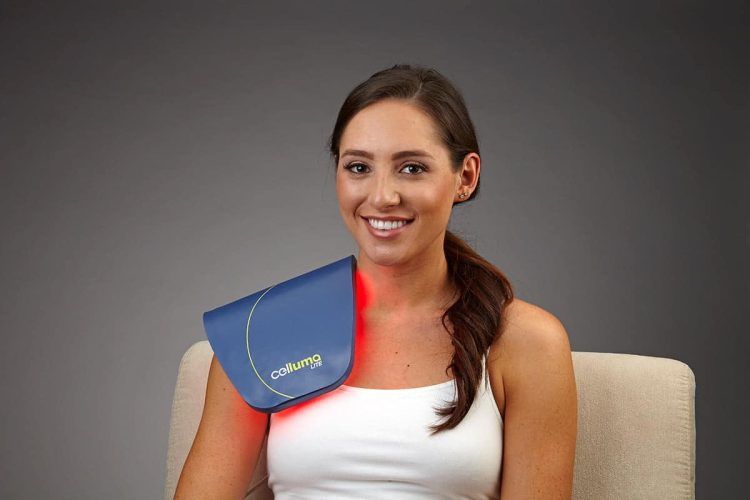The quest for a fitter body, sharper mind, and longer life has traditionally led people to the gym. But in recent years, a new wave of biohacking technologies has surged into mainstream health culture—none more intriguing than red light therapy (RLT). Touted by elite athletes, wellness influencers, and startup founders alike, red light therapy is now being marketed as a potential replacement for workouts, promising everything from accelerated fat loss to muscle recovery—all without breaking a sweat. But can RLT truly substitute for physical exercise, or is it just another shiny tech mirage in the $5 trillion wellness economy?
Scientific Review of Red Light for Muscle Recovery and Fat Loss
Red light therapy, also known as low-level light therapy (LLLT) or photobiomodulation (PBM), uses specific wavelengths of red and near-infrared light to stimulate cells and promote healing, reduce inflammation, and support metabolic processes. These wavelengths typically range from 600 to 1000 nanometers. When absorbed by mitochondria, the energy powerhouses of cells, this light triggers the production of adenosine triphosphate (ATP), enhancing cellular function and repair.
In terms of muscle recovery, multiple peer-reviewed studies have reported promising results. A 2016 meta-analysis published in Lasers in Medical Science found that pre- and post-exercise application of RLT significantly reduced muscle soreness and improved strength recovery. Professional athletes, including members of the NFL and UFC, use RLT devices to manage delayed onset muscle soreness (DOMS), improve joint flexibility, and decrease recovery time between training sessions.
But what about fat loss? Here, the evidence is more nuanced. A 2020 study in Photomedicine and Laser Surgery showed modest reductions in waist circumference after several weeks of regular RLT use. The proposed mechanism involves the release of triglycerides from fat cells due to increased cellular respiration and membrane permeability. However, experts caution that while RLT may support metabolic health, it cannot replace the calorie-burning and hormonal benefits of traditional exercise. Without a proper diet and active lifestyle, red light therapy alone is unlikely to produce significant fat reduction.
Moreover, the dosage and wavelength specificity matter. Clinical-grade results are usually achieved with devices offering 850nm near-infrared light and a power density between 20–200 mW/cm². At-home devices may underperform due to lower irradiance and smaller treatment areas, which brings us to the booming consumer market.
Comparison with Infrared Saunas and Cryotherapy
To understand red light therapy’s potential, it’s essential to compare it with its closest at-home wellness competitors: infrared saunas and cryotherapy. All three therapies claim to enhance recovery, promote longevity, and reduce inflammation—but they work through fundamentally different mechanisms.
Infrared saunas generate heat using far-infrared radiation to elevate body temperature, promoting sweating and detoxification. Numerous studies support their cardiovascular and mental health benefits, including reduced blood pressure and improved mood through endorphin release. However, their muscle recovery benefits tend to be indirect, relying on heat shock proteins and systemic circulation improvements.
Cryotherapy, in contrast, works by exposing the body to sub-zero temperatures to constrict blood vessels and reduce inflammation rapidly. This is especially useful for acute injury recovery and pain management. Whole-body cryo chambers are used in elite sports training facilities but are less accessible to the average consumer due to high costs and complexity.
Red light therapy, uniquely, works without temperature modulation. Instead, it influences biological systems at the cellular level, offering localized recovery without thermal stress. RLT is also more time-efficient (10–20 minutes per session) and typically does not require supervision, making it ideal for daily home use. Unlike cryotherapy, which may carry risks like frostbite or nerve damage, red light therapy is widely regarded as safe when used according to manufacturer guidelines.
Best Devices for Home Use
The explosion in red light therapy’s popularity has flooded the market with consumer devices, ranging from hand-held wands to full-body panels. Choosing the right device involves considering factors like light wavelength, power output, coverage area, and design ergonomics. Here are some top-rated devices that have garnered attention for both efficacy and innovation:
- Joovv Solo 3.0 – This modular full-body panel offers medical-grade power, dual red (660nm) and near-infrared (850nm) wavelengths, and Bluetooth-enabled personalization. It’s a favorite among professional athletes and biohackers alike.
- Mito Red Light MitoPRO+ Series – Known for its high irradiance and value-for-money, the MitoPRO+ series combines multi-wavelength output (including 630nm and 830nm) with quiet, flicker-free operation. It’s a popular choice for users seeking clinical benefits at home.
- PlatinumLED BIO MAX – This device offers advanced spectrum blending and is particularly lauded for its effectiveness in skin rejuvenation and muscle recovery. It also includes an integrated digital timer and EMF-shielded design.
- NovaaLab Advanced Light Therapy Belt – Ideal for targeted use on the abdomen or lower back, this wearable device is praised for convenience and affordability, making it a good option for those new to red light therapy.
- Hooga HG300 – A compact and budget-friendly panel ideal for desk-side or travel use. It offers sufficient power for localized treatments and is commonly used by wellness bloggers and remote workers.

When using any RLT device, consistency is key. Experts recommend using red light therapy at least 3–5 times per week, with sessions lasting 10–20 minutes depending on the device and treatment area. Always wear eye protection when treating the face, and consult with a physician if using RLT in conjunction with medication or for chronic health conditions.
Can Red Light Replace the Gym?
Despite its therapeutic promise, red light therapy is not a substitute for physical exercise. It can complement, support, and enhance fitness goals—but it cannot replicate the holistic benefits of cardiovascular conditioning, muscular hypertrophy, or neuroplastic stimulation that comes from real physical exertion. The hormonal, neurological, and psychological gains from lifting weights, running, or practicing yoga are multifactorial and deeply ingrained in human physiology.
What red light therapy does offer is a way to maximize your recovery window, reduce injury risk, and squeeze more performance out of limited workout time. For busy professionals, aging populations, or those recovering from surgery or burnout, RLT may serve as a bridge back to full physical activity. In this sense, it’s more like a catalyst than a replacement—a tool to help you train smarter, not lazier.
Moreover, red light therapy may shine brightest when integrated into broader health protocols. Biohacking communities often pair RLT with intermittent fasting, cold exposure, magnesium supplementation, and sleep tracking to enhance its cumulative effects. When viewed through this lens, RLT becomes part of a comprehensive wellness lifestyle rather than a standalone miracle fix.
The Verdict: High-Tech Hype or Foundational Tool?
Red light therapy sits at the intersection of cutting-edge science and ancient healing wisdom—an area where modern physics meets cellular biology. Its benefits for muscle recovery are well-documented, and its potential for supporting fat metabolism is promising, though not yet conclusive. For those serious about fitness and longevity, RLT is more than just a wellness fad—it’s a recovery accelerator and inflammation modulator that fits neatly into modern home health routines.
However, the danger lies in overpromising. No device—no matter how advanced—can replace the mental discipline, cardiovascular strength, and metabolic demands of physical exercise. The best results arise when red light therapy is used as part of an ecosystem of smart training, nutrition, mindfulness, and rest. As with any wellness trend, the key is to remain informed, skeptical, and self-aware.
So, can red light therapy replace your gym session? The answer is: it shouldn’t. But can it make your gym sessions more effective, your recovery faster, and your motivation more sustainable? Absolutely. In a world increasingly defined by convenience and burnout, red light therapy may not be the new workout—but it could be the secret to sticking with the old one.










































